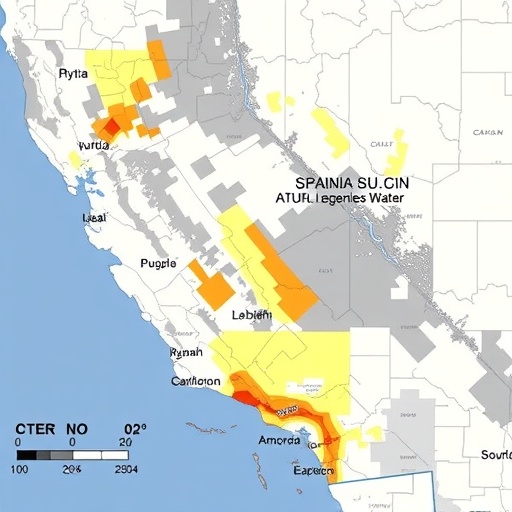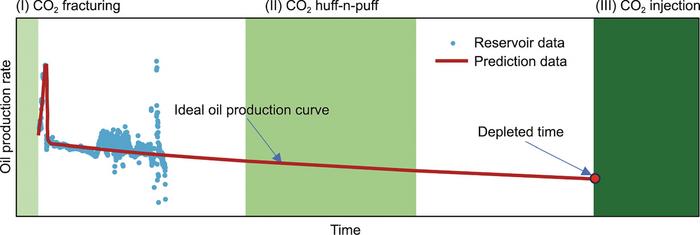Recent advances in oncological research have led to innovative therapeutic strategies aimed at manipulating the body’s immune response against tumors. A groundbreaking study by Yang, Zhu, and Yang, as outlined in their publication, presents a novel approach that harnesses the potential of camouflaged membrane-bridged radionuclide and manganese (Mn) single-atom enzymes. This innovative method primarily targets the disruption of lipid metabolism, which has critical implications for evoking robust antitumor immunity. This fascinating research offers a glimpse into an exciting new frontier in cancer treatment, where metabolic pathways and immune functionality intertwine.
At the heart of this research is the understanding that tumors often manipulate lipid metabolism for their growth and survival. By exploiting this weakness, the authors propose a unique strategy that involves using specially designed enzymes capable of bridging radionuclides with active therapeutic elements. These enzymes play a crucial role in localizing the therapeutic action directly at the tumor site, enhancing the effectiveness of the treatment while minimizing systemic toxicity. This targeted approach significantly raises the therapeutic index of cancer treatments, an aspect that has long been a challenge in traditional cancer therapies.
One of the most striking features of this innovative research is the application of membrane-bridged radionuclides. These are engineered nanoparticles that mimic biomolecules, allowing them to remain undetected by the immune system. This camouflage feature ensures prolonged circulation within the biological milieu, giving these radionuclides the upper hand in delivering therapeutic payloads right to the tumor microenvironment. The research demonstrates that this strategy not only enhances the specificity of the treatment but also reduces off-target effects, a common side effect of conventional cancer therapies.
The study reveals that the Mn single-atom enzymes play a pivotal role in managing the lipid metabolic processes within tumor cells. By disrupting lipid metabolism, these enzymes induce cellular stress in cancer cells, making them more susceptible to immune-mediated attack. This metabolic disruption is an emerging strategy in cancer immunotherapy, where the aim is not only to target cancer cells directly but also to enhance the body’s innate immune response, effectively training the immune system to recognize and destroy tumor cells.
In terms of experimental validation, the researchers employed a series of in vitro and in vivo studies to evaluate the efficacy of their novel approach. The data showed that tumors treated with the camouflaged radionuclide/Mn enzyme bio-conjugates demonstrated significant regression compared to untreated control groups. These findings underscore the potential of integrating metabolic intervention with immunotherapeutic strategies to augment cancer treatment outcomes.
Another critical aspect discussed in the study is the potential scaling of this technology for clinical use. As with any groundbreaking scientific advancement, one vital consideration is the translation from bench to bedside. The distinctive design of these enzymes and radionuclide constructs can be adapted for a variety of cancers, presenting a versatile platform that could be tailored to individual patients, ushering in a new era of personalized medicine.
Despite the promising results, the researchers acknowledge the challenges ahead. Clinical translation of novel treatments often encounters regulatory hurdles, manufacturing complexities, and patient safety concerns. However, the authors advocate for expedited research initiatives that will facilitate the transition from laboratory successes to applicable clinical strategies. They emphasize the importance of collaborative efforts between academic researchers, clinicians, and industry stakeholders to realize the full potential of their findings.
Moreover, this research opens up intriguing avenues for further exploration. The interplay between lipid metabolism and immune response in the context of cancer is a rich field for future research. Investigating how different dietary habits, metabolic syndromes, and exercise can influence treatment outcomes could enhance the understanding of cancer biology and therapy. This line of inquiry aligns closely with the growing interest in cancer preventative strategies rooted in lifestyle choices.
The implications of Yang, Zhu, and Yang’s findings extend beyond immediate therapeutic applications. Understanding the mechanisms by which lipid metabolism influences tumor progression and immunity could lead to the identification of new biomarkers for cancer. Such biomarkers would facilitate early detection and monitoring of cancer therapies, ultimately improving patient prognoses and survival rates.
In conclusion, the research spearheaded by Yang et al. represents a significant advancement in cancer immunotherapy through the innovative use of camouflaged membrane-bridged radionuclides and Mn single-atom enzymes. The study highlights the critical link between tumor metabolism and immune response, providing a fresh perspective on cancer treatment strategies. As researchers continue to explore this novel therapeutic landscape, the hope for more effective and personalized cancer treatments becomes increasingly tangible.
The ongoing evolution of cancer treatment underscores the necessity for scientific rigor and innovation in addressing complex health challenges. The work of Yang, Zhu, and Yang not only propels forward the field of oncology but also ignites inspiration for future studies aimed at redefining how we approach cancer therapies. As we stand on the brink of what could be revolutionary changes in cancer treatment paradigms, the call for increased funding and collaboration in this area has never been more pressing. With dedicated research and development, the potential for transforming the cancer treatment landscape into a more hopeful domain looms large on the horizon.
By continuing to explore the intersection of metabolic processes and immune modulation in cancer treatment, researchers may uncover a wealth of novel strategies. Enhancing our understanding of these pathways will be central to developing advanced therapeutics that not only target tumors more effectively but also empower the immune system to fight cancer more dynamically. The promise of personalized medicine, fueled by such cutting-edge research, forms a beacon of hope for millions battling cancer worldwide.
As this research gains traction and visibility within the scientific community, we may witness a paradigm shift in how oncologists approach treatment plans. The revelation that camouflaged radionuclides paired with innovative enzymes can spur antitumor immunity will undoubtedly inspire many other scientists to explore similar paths. Such collaborative efforts may very well define the future of cancer care, forging new links between metabolism, immunity, and the complex biology of tumors.
Subject of Research: Camouflaged membrane-bridged radionuclide/Mn single-atom enzymes for targeting lipid metabolism and evoking antitumor immunity.
Article Title: Camouflaged membrane-bridged radionuclide/Mn single-atom enzymes target lipid metabolism disruption to evoke antitumor immunity.
Article References:
Yang, MD., Zhu, CY., Yang, G. et al. Camouflaged membrane-bridged radionuclide/Mn single-atom enzymes target lipid metabolism disruption to evoke antitumor immunity.
Military Med Res 12, 59 (2025). https://doi.org/10.1186/s40779-025-00647-7
Image Credits: AI Generated
DOI: 10.1186/s40779-025-00647-7
Keywords: cancer treatment, immunotherapy, lipid metabolism, radionuclides, manganese single-atom enzymes, targeted therapy





